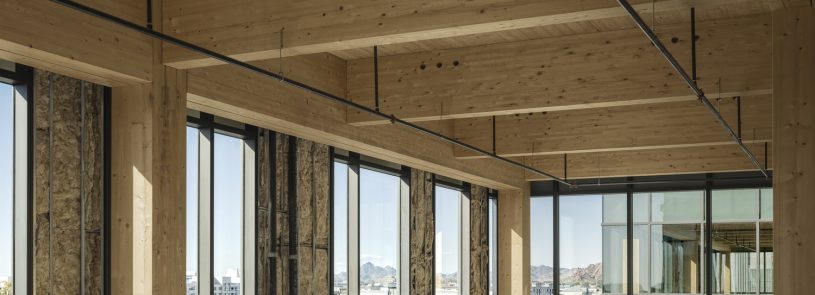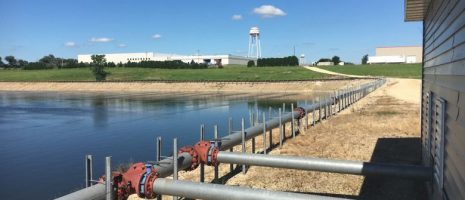Mass Timber 101: How far will your dollar stretch?

Fourth in a series based on the IMEG executive guide, “Mass Timber 101: A Guide to the Hottest Sustainable Building Material.”
By Heather Heidenreich
Cross-laminated timber is becoming more popular in projects across the country, but the material is cost competitive, and sometimes more expensive than steel and concrete. If that’s the case, why is it such a hot trend in today’s industry?
It’s because material cost is only one aspect of the big picture costs. As owners, contractors, and design teams discuss building materials, there are other cost considerations to include.
Overall cost savings for CLT will be realized through reductions in:
- Material weight: When it comes to installing foundations, a CLT building will weigh less than steel or concrete, which will equate to smaller foundations and fewer concrete materials.
- Construction schedule: Prefabrication is a key component to reducing the assembly time. Upfront, more time is spent planning so minimal field cutting is required. A “kit of parts” means easier assembly due to relatively large, prefabricated panels and little modification on site.
- Labor costs: At first, framing crews may be apprehensive about working with CLT. But a good framing crew has all the skills needed to work with this material and could possibly cut the crew size in half due to the ease of using prefabricated materials. CLT requires no special tools, and a regular crane typically can lift the panels into place.
- Construction waste: The amount of construction waste is very minimal because the panels are shop-fabricated and arrive at the site assembled, so there is little to no field cutting.
- Fewer errors and tolerances: Again, because the panels are prefabricated, the final product is much cleaner and more level than a stick-built project. MEP system penetrations can also be coordinated up front in the shop drawing and fabrication process, making the assembly process simpler.
Projects rarely have an unlimited budget, so cost considerations weigh heavily on the decision-making process for many owners.
Also in this series:
- Mass Timber: Each type offers unique benefits
- Code changes offer building owners much more flexibility
- Environmental advantages of mass timber
- Is mass timber right for your project?
For more information, download a copy of the IMEG executive guide, “Mass Timber 101: A Guide to the Hottest Sustainable Building Material.”












